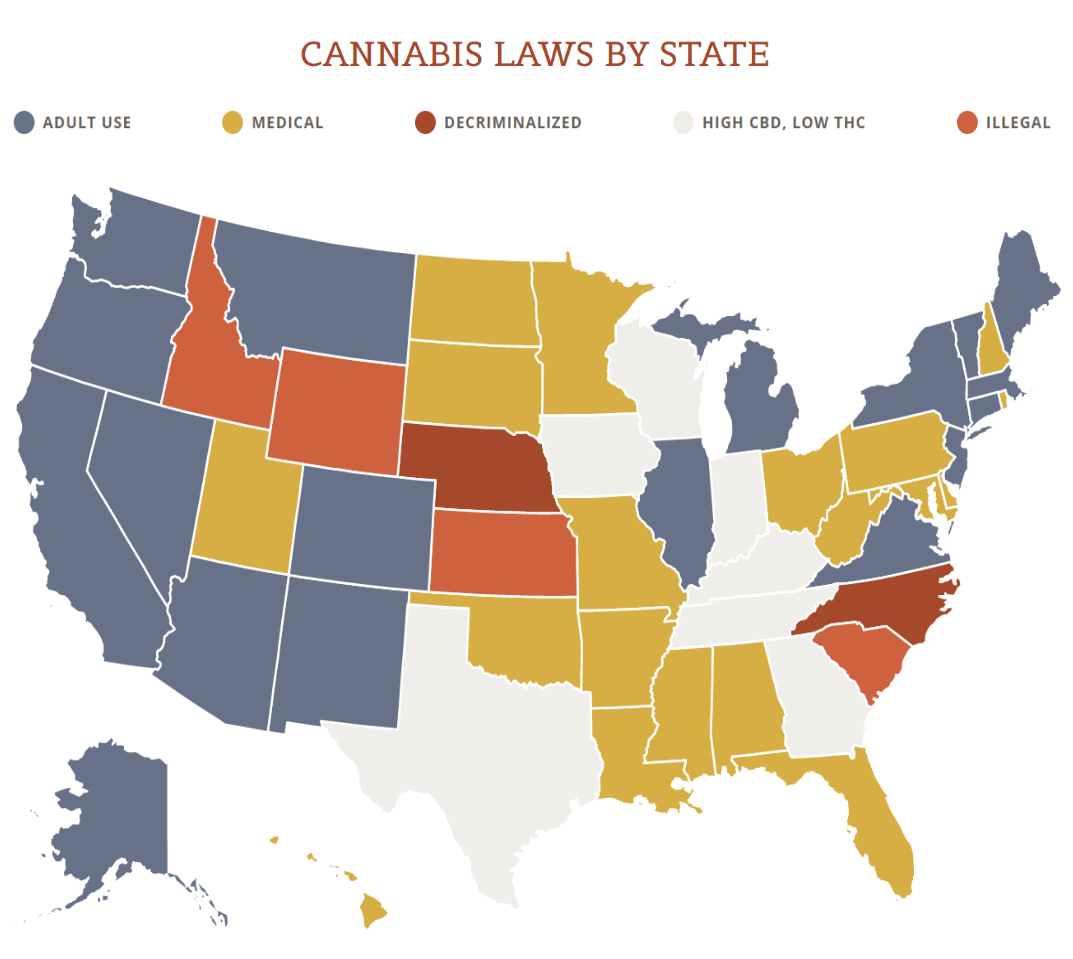On February 2, 2023, the Washington State Liquor and Cannabis Board (“LCB”) released an update regarding the interactive mapping tool for determining whether people meet have lived in Disproportionately Impacted Areas (“DIA”). As we wrote about here, having lived in a DIA for at least five years between 1980 and 2010 is one of three possible eligibility criteria for the forthcoming Social Equity in Cannabis (“SEIC”) program, which opens for applications March 1. We wrote about that here. The map can be found by a link on the LCB’s website, or here.
Increased threshold rate in the new DIA map
Prior to the update, to qualify as a DIA, an individual census tract must have been in the top 20% on all of the following indicators:
- high poverty rate;
- high rate of participation in income-based federal programs;
- High rate of unemployment; and
- High rate of convictions.
The update states the LCB has increased the qualifying threshold to now include census tracts in the top 30% of the above factors. We note our concerns from a recent post about the mapping tool that while it may be safe to assume that it relies on 10-year national census data, it is far from clear what exactly an eligibility showing on the mapping tool really means.
Ultimately, the mapping tool is only intended for applicants to collect information about their eligibility. As the LCB notes on the mapping tool “The final determination about whether an applicant lived in a disproportionately impacted area will be made by the third-party reviewer”.
View the US Map of Marijuana Legality
Impact of the new DIA map
The LCB’s update states that community members were concerned that “the maps did not identify enough places that were more likely to have been impacted by the war on drugs”. This is a quick acquiescence by the LCB to concerns of community members and stakeholders, which should be applauded. It’s likely that the 20% threshold was too low and as barring many prospective applicants from establishing eligibility for an SEIC application.
It should come as no surprise that limiting DIA eligibility to census tracts in the top 20% of poverty, unemployment, and criminal conviction rates resulted in too few prospective applicants having interest in the program, and others being barred from eligibility on this basis. Many people having lived or living in such census tracts, by definition, may have a tough time starting a retail cannabis operation for a host of reasons. The absence of disposable time and income necessary to either quit a job and invest in or spend time raising capital to start a cannabis business venture being the most obvious.
Starting and operating cannabis businesses is not a cheap proposition. These businesses are subject to extraordinary tax burdens, a shortage of traditional banking and lending opportunities, and an absurdly restrictive regulatory landscape. These factors are only a few of the many challenges Washington cannabis businesses face that make for slim margins, particularly in a bottomed out regional market for the commodity.
By increasing the threshold DIA rate to 30%, it stands to reason that more prospective applicants will become eligible that have the time and capital to apply for these licenses. Thanks to continuing community member and stakeholder involvement in the development of the program it seems unlikely that the increase will have any negative impact on its purpose. This is the right move by the LCB and will hopefully increase the number of eligible applicants.
The application window opens for 30 days on March 1 and hopefully this development increases opportunities for more people disaffected by the war on drugs. Let’s see how it goes.
Need Help With Washington Cannabis Law?

























